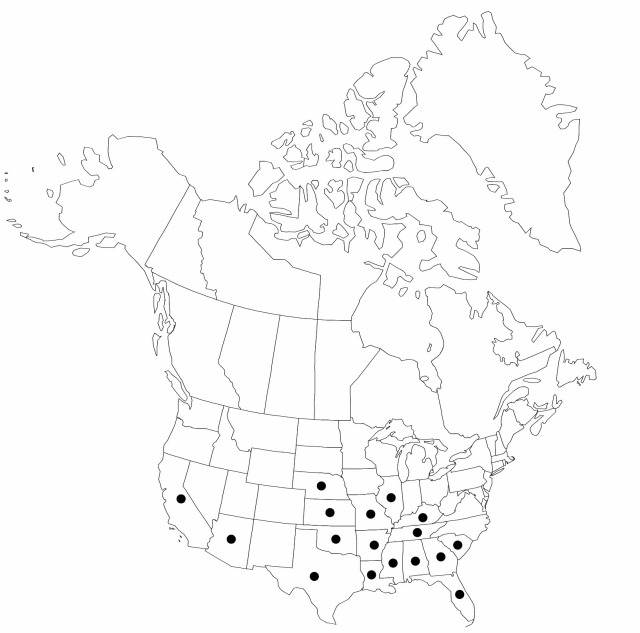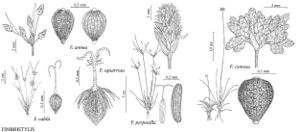Fimbristylis vahlii
Hort. Berol. 1: 287. 1827.
Plants annual, cespitose, delicate, 4–15 cm, bases soft; rhizomes absent. Leaves polystichous, mostly spreading or excurved, often exceeding culms; sheaths entire, abaxially smooth or sparsely hirtellous; ligule absent; blades filiform, to 0.5 mm wide, somewhat involute, abaxially glabrous or ascending-strigillose. Inflorescences terminal; spikelets sessile or subsessile in single capitate leafyinvolucrate cluster; scapes filiform; involucral-bracts leafy, setaceous, greatly overtopping inflorescence. Spikelets greenish, cylindric to lanceoloid-cylindric, 5–10 mm; fertile scales narrowly ovate to lanceolate, 1–1.5 mm, acute, glabrous, midrib strong, excurrent as cusp. Flowers: stamens 1; styles 2-fid, slender, bulbous-based, smooth or papillate. Achenes pale, tumidly obovoid, 0.5–0.7 mm, cancellate, pits horizontally rectangular in 5–7 vertical rows per side. 2n = 20.
Phenology: Fruiting summer–fall.
Habitat: Moist to wet, alluvial or mineralized banks, shores, fluctuating pond and lake edges, often a “drawdown” plant around stock tanks and reservoirs
Elevation: 0–500 m
Distribution

Ala., Ariz., Ark., Calif., Fla., Ga., Ill., Kans., Ky., La., Miss., Mo., Nebr., Okla., S.C., Tenn., Tex., Mexico, Central America, South America
Discussion
Selected References
None.
Lower Taxa
"shortened" is not a number.
